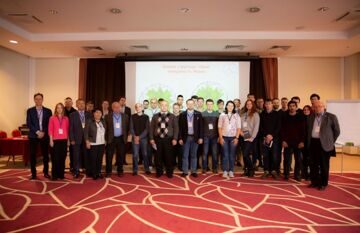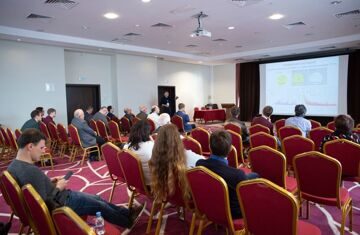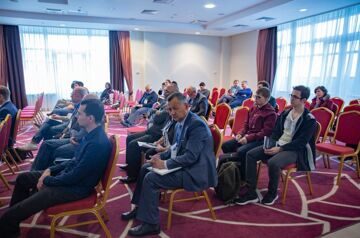
On October 23-25, the International School “Prospective Standards of Time and Frequency at Atomic and Nuclear Transitions” was held at NRNU MEPhI, the purpose of which was to discuss conceptually new approaches to the optical standards of time and frequency.

The school was organized by LaPlase Institute NRNU MEPhI with financial support from the Russian Science Foundation (RSF). It brought together recognized experts in the field of precision laser spectroscopy, quantum metrology, nuclear physics and laser technology, as well as young researchers, masters and graduate students from leading industry, educational and scientific organizations of the Russian Federation, as well as foreign universities and institutes.

The event was opened by Corresponding Member of the Russian Academy of Sciences, Director of the Lebedev Physical Institute - Nikolai Kolachevsky. A review report on the determination of the unit of time and frequency was made by Vitaliy Palchikov, chief research fellow at the All-Russian Scientific Research Institute of Physicotechnical and Radio Engineering Measurements (VNIIFTRI). He noted the importance of applied research on the development of a nuclear frequency standard, as well as the fact that currently leading research groups in the USA, Germany, Great Britain and Japan are actively working on solving the problems of creating a nuclear standard for time and frequency.

Despite the tremendous accuracy achieved to date in modern atomic clocks around the world, there is a wide range of concepts for creating similar next-generation devices based on completely different physical systems. A special candidate for future optical watches is the low-energy isomeric state of thorium-229, which opens the way to a nuclear watch. During the school, new applications of precision standards for frequency and time were identified and discussed, in particular with respect to testing the hypothesis of drift of fundamental constants in time, geodesy and quantum gravimetry.

Theorist Yevgeny Tkalya, the founder of the idea of using cores to create watches, made a review report. His report was devoted to the description of physical systems that make it possible to excite thorium-229 nuclei into an isomeric state and significantly increase the fluorescent signal resulting from relaxation of the isomeric state. In the future, such systems will make it possible to obtain more accurate energy of an anomalously low-lying level in the core of thorium-229.

Smagul Karazhanov, head of the Institute for Energy Technology Instituttvein group (Norway), spoke about approaches to theoretical studies of thorium silicate formed by pulsed laser implantation. This system is relatively simple from the point of view of experimental implementation and is an ensemble of thorium-229 ions introduced by pulsed laser implantation into a matrix of thorium oxide. A key feature of such a system is that in the early stages of expansion of the plasma torch, when the plasma can still be considered quasistationary, thorium-229 ions experience a large number of inelastic collisions with surrounding electrons. This process through the mechanism of reverse internal electronic conversion (IEC) can translate the core of thorium-229 into an excited state. Thus, laser implantation opens up a unique opportunity and allows you to combine two important processes at once - the excitation of thorium-229 isomeric nuclei and implantation into a matrix of a broadband dielectric (thorium silicate), while increasing the useful signal to several million photons per second, which is unprecedented today day result.
The pride of NRNU MEPhI is the presentation of Oleg Pronin, professor of Helmut-Schmidt-Universitat Hamburg (Germany), graduate of the Department No. 37 of the LaPlase Institute, with a lecture “Overview of frequency comb generation in UV and XUV ranges. On the possibility of generating XUV combs using ytterbium femtosecond thin-disk lasers. ” Mariana Safronova, professor at the University of Delaware Newark (USA), also delivered a series of remarkable lectures. She made presentations on the topics: “Dark matter”, “Search for changes in fundamental constants and dark matter with atomic clocks”, “Search for violation of Lorentz invariance with atomic clocks”.
The leading experts of scientific and educational organizations also took part in the School: Dilshod Eshmuradov (TashSTU, Uzbekistan), Parakhat Matyakubova (TashSTU, Uzbekistan), Alexander Nikolaev (SINP MSU), Alexander Shevelko (FIAN), Vladimir Velichansky (FIAN), Alexey Sysoev ( NRNU MEPhI).